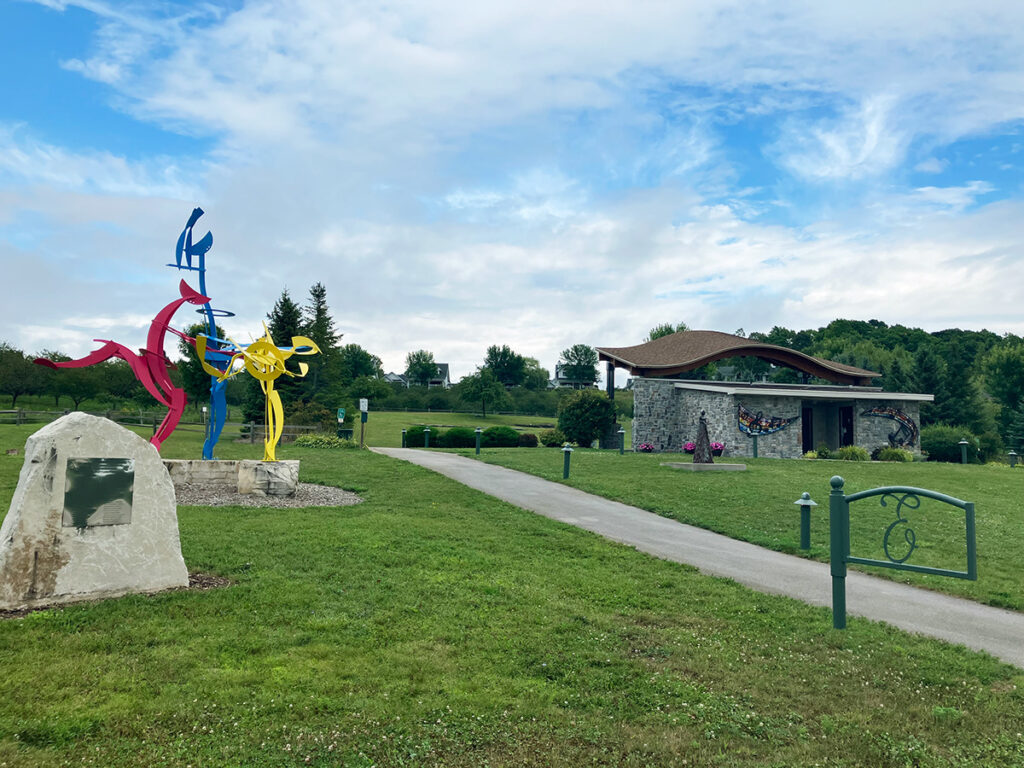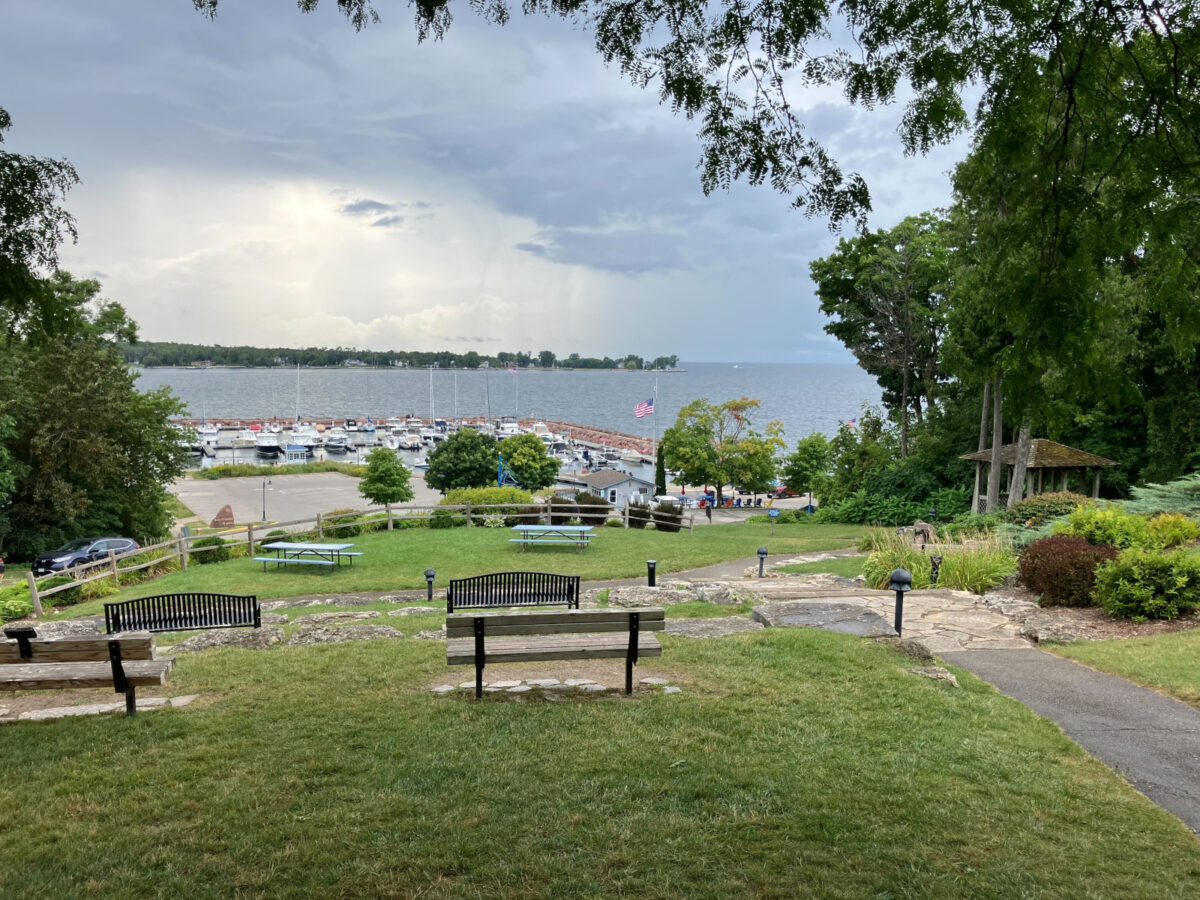With its status as a vacation destination, one could say Door County is a desirable place to be.
However, desirable does not necessarily mean livable, especially in regards to a community’s approach to age-friendly infrastructure and public space, according to Cynthia Germain. She is the president and CEO of Do Good Door County, a local organization dedicated to helping people age in place.
Do Good uses the term livability as defined by the AARP: “a livable community is one that is safe and secure. It offers choices in where to live and how to get around. And it equitably serves residents of all ages, ability levels, incomes, races, ethnicities, sexual orientations, gender identities, and other backgrounds.”
Door County has a good start but is lacking in some areas, according to Germain. In public spaces, things like uneven walking surfaces and poor lighting can be addressed, she said.
Adding signage that aids low vision, providing adequate bathroom spaces for caregiver needs, and installing special disposal receptacles for incontinence aids and medical waste are also examples of amenities and improvements related to livability, Germain said.
Germain is making the case for livability and thanks to a recent $4,000 grant from the Green Bay Packers Foundation, Do Good is making an offer to every Door County municipality to help them improve their communities and the county as a whole.
At least one municipality so far is taking the organization up on its offer. The Village of Egg Harbor board was excited when Germain approached them, according to village administrator Megan Sawyer.
The offer? Do Good will audit one or two public spaces of the municipality’s choosing, using criteria from the AARP’s “livability toolkit”. Do Good will also compile the data it collects and give the municipality specific recommendations for what can be done to make that public space a more livable one.
Anyone can use the AARP toolkit, but Do Good has the expertise and funding to put information gathered into a helpful package the municipality can use to apply for grants and other funding, Germain said.
Do Good can also help leaders form a budget for livability and apply for funding, Germain added. Though that service is not covered by the grant money the organization received, Do Good would be willing to do extra work to put the whole county on a path to better livability.
“It’s a long game,” she said.
Assessment details
Do Good has a five-member board. The organization has reached out to all Door County municipalities to gauge interest in making those communities’ public spaces more livable.
So far, “a handful” have responded, Germain said, including the Villages of Ephraim and Egg Harbor. The organization will focus on those that have responded and will continue to reach out to the others, after what she surmised has been a busy summer season for municipalities.
The livability assessments of public spaces are the baseline offer, but Do Good also can partner with municipalities to perform more specific audits as well, Germain explained.
One is called an intercept survey, also using the AARP’s tools to engage with people who are actually using the space.
“That one takes volunteers,” Germain said. “You need a lot of people with a lot of clipboards.”
The Village of Egg Harbor plans to take advantage of the intercept survey at one of the last sunset performances held at Peg Egan Performing Arts Center, Sawyer said.
It is a great opportunity to get real people who use the space’s feedback, she told the village board at its meeting Wednesday.
A walkability survey is the other assessment Do Good offers. The organization would also work in collaboration with the municipality for volunteer resources, Germain said.
The assessment entails observing how pedestrians and drivers use a particular thoroughfare, recording the information and then possibly making a case to the community and local leaders for change.

Egg Harbor plans
The Village of Egg Harbor board had already designated a few public spaces for improvement when it received Do Good’s offer, Sawyer said, and those are the spaces the village decided to work with Do Good to assess. The municipality already has budgeted funds for design concepts and plans for each one, she added, but does not yet have funding for construction.
One of the public spaces is Harbor View Park. The village in early 2024 put out a bid for proposals for a design concept and probable cost of construction. The village has committed $25,000 of its budget this year for those plans and approved a proposal in April from Tgda Landscape Architecture, based in Chicago, to do that work, Sawyer said
Tgda will be focusing on renewing the main park entrance and central gathering space, grading areas for natural drainage, creating more accessible paths to reach all the parks’ features, adding programmable spaces, and engaging visitors and residents, among other things, according to the company’s proposal.
The village and Tgda are in the process of scheduling a project kickoff meeting, according to the Parks and Public Works committee’s July meeting minutes.
The other public space the village is assessing for improvement is the Peg Egan Performing Arts Center, an outdoor concert venue on Church Street. The village has budgeted $5,000 for design work there, including improved lighting and adding paths to the green space where concert audiences gather.
The Parks and Public Works committee is working with a local retired architect and Door Landscape and Nursery on the final plans, according to Sawyer.
A vital piece in both planning efforts is the accessibility factor, she said, and maintaining the spaces’ integrity with how they are already being used. Sawyer said she hopes Do Good’s assessments and ensuing recommendations will give the village more specific ideas about what it should be prioritizing to make the spaces as accessible as possible to all ages and persons.

Accessibility vs. livability
Livability goes beyond accessibility and is more than natural beauty and a thriving arts scene, though those ingredients certainly contribute to the designation, Germain said.
The AARP’s definition of livability stems from the World Health Organization’s criteria for creating age-friendly communities. The AARP identifies “Eight Domains of Livability” and uses this framework to grade communities in a “Livability Index.”
The eight domains are: outdoor spaces and buildings, transportation, housing, social participation, respect and social inclusion, work and civic engagement, communication and information, and community and health services.
A lot of local organizations are already working on things like housing and transportation, Germain said. Do Good is focusing on four of the other domains through initiatives funded by the Packers Foundation grant money.
Providing assessments and livability audits for public spaces is the first of the four initiatives Do Good has planned.
In fall, the organization will conduct focus groups in the northern part of the county (north of Sturgeon Bay) with regard to socialization.
“What do we need to do as a county to bring more social opportunities farther north, where it tends to be more isolated?” Germain asked.
Do Good will also work in collaboration with the University of Wisconsin-Madison’s Extension Door County Office to produce an educational series addressing respect and social inclusion.
Finally, the organization plans to review how seniors find out about available resources and create a report on the best way to improve communication for Door County seniors. Resources might include handyman services, transportation, hearing and visual aid programs, meal delivery and preparation, and cleaning and other services that can help someone age in their home successfully.
The focus of Do Good’s initiatives was provided by the results of an Aging in Place survey Do Good and the St. Norbert College Strategic Research Institute published in 2022. For example, 66 percent of respondents said they received information about resources available to them from “word of mouth,” which is fine, Germain said, if the person they are hearing it from is well-informed.
Most of the 1,233 survey respondents were women over the age of 50 who have lived in Door County for more than 15 years.
Addressing skepticism
There are some community leaders who have expressed skepticism, saying that Door County is already livable, Germain said. The term often gets interchanged with “accessible,” she added.
It’s more than mobility ramps, she said. The Americans with Disabilities Act has been around for a long time, and people are familiar with those types of accessibility criteria already.
One example of an improvement that takes a public space beyond “accessible” to “livable” are hearing loops, Germain said. Also known as induction loop systems, they are assistive listening systems that help people with hearing loss.
The Aging and Disability Resource Center in Sturgeon Bay and Peninsula Players Theatre in Fish Creek both have hearing loop systems.
“The more places that have those sorts of things,” she said, “the more you can enjoy your community.”
Hearing loss is just one example of many things people experience as they age. Sight loss, cognitive decline and mobility issues are all factors that can contribute to seniors becoming more isolated, according to AARP reports. Social isolation in turn contributes to declining health and being unable to age in place.
Among survey respondents, 86 percent said the most important thing to them as they age is being able to stay in their Door County home.
Besides making things better overall for seniors, livability is good for everyone, Germain said, and visitors and residents alike benefit from a more livable, age-friendly community.
Sawyer agreed with Germain.
There is always room for improvement, she said, and it might not be blatantly obvious what someone with a specific challenge might need to enjoy a space.
There’s nothing to lose with Do Good’s offer, she said. If a municipality doesn’t have the time or money or energy to make the improvements recommended, awareness is enough for now, she added.
“You can start to plan,” Sawyer said. “It’s a good outlook to have for the future to make our spaces as accessible and enjoyable as possible for everyone who visits and lives here.”
Do Good Door County beginnings
Twenty years ago, Germain was a nursing home administrator in charge of a 200-bed skilled nursing facility and assisted living home. With a passion for the field of aging, she felt stymied by her level of impact in those roles and wanted to make a bigger change in how people age in the United States.
She worked with William Gingold, a professor at the University of Illinois Urbana-Champaign, at the Continuing Education Institute of Illinois, educating health professionals on topics related to aging. Gingold and Germain went on to start Active Seniors Options, Inc. a nonprofit dedicated to “successful aging through its collaborative efforts in education, training, research, and community service,” according to the organization’s website.
In 2015, Germain took over for Gingold as director of operations at the nonprofit. She moved to Door County in 2017 and started Do Good Door County in 2021.
Do Good’s vision is for all residents of Door County to be able to age in the way they want, in the place they want, and be a part of the community that they love. Do Good Door County operates under the Active Seniors Options nonprofit umbrella, Germain said.
Germain moved to Door County to take care of her own aging parents and noticed some gaps and issues for seniors here, she said. She was inspired by “They Is Us,” published by the Door County Community Foundation in 2015. The initiative generated ideas of what Door County residents wanted and needed as they aged.
Germain also began to confront her own aging after the move and she asked herself what it would look like if she was 80 or 90 years old, living here.
“If I want things to be different, I need to start working on it,” she said.

